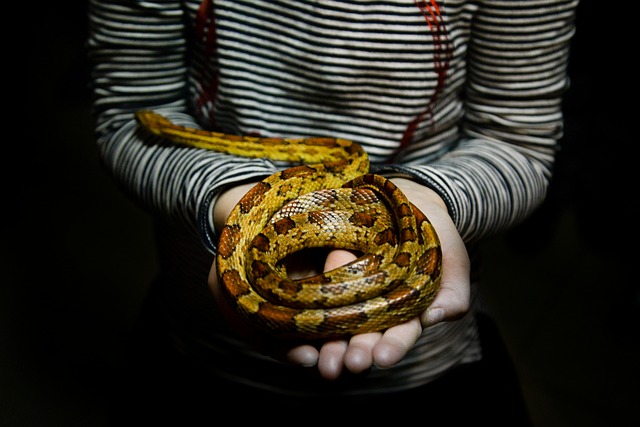Tips and Techniques to Charm an Aggressive Snake
Image by Rudy and Peter Skitterians from Pixabay
Reptile experts generally recommend that pet owners get a captive-born snake. As they are already accustomed to being tamed and somewhat domesticated, which makes for a less aggressive snake. Snakes can show a diversity of antipredator responses including aggression, camouflage, flight, and a number of other “stereotyped reactions” to a threat at close proximity. It is important to identify and assess the cause of a snake’s aggression in order to find the correct measures to tame them.
Understanding the reason behind a snake’s aggression
Snakes can develop aggressive personalities through ill-treatment and improper care, whilst others are aggressive due to spending some portion of their upbringing in the wild. Some are simply born aggressive with their temperament displayed since birth. There are times when even the most docile of snakes display extremely aggressive behavior when faced with a situation that makes them feel threatened, scared, or uncomfortable. Aggressive behavior is reinforced when snakes live in unsuitable environments. To tame a snake, owners need to first make sure that the snake becomes familiarized with its environment so that it can register which beings and things are harmless and typical.
Territorial vs Feeding responses
Aggressive responses can be placed into two categories, both of which are powered by instinctive responses. Territorial responses work as a defense mechanism against a threat and feeding responses are when the snake’s aggression comes from assuming that whatever has entered its habitat is a source of food. Taming a snake infers that they need to be trained to get familiarized with distinguishing owners from predators or as food.
Territorial responses are actually a survival tactic employed by the snake to protect itself from being attacked by a predator, so to remove this behavior from a snake, one needs to allow their pet time to unlearn this response or at least learn that their keepers are not threats.
Snakes generally have a great feeding response, but this is why it has become such a common reason that they bite. It is due to the snake had actually learned to bite whatever enters their cage. This happens when most of the snake’s human interaction comes from their feeding time, so the snake naturally associates the hand that feeds them with food.
How to tame a snake
Just like any good relationship, it is important to allow your snake to have the opportunity to get to know you as well as its surroundings. For around 7 to 10 days try to resist the urge to handle your snake too much, instead sit outside their cage so that they get familiar with your scent and register you as safe for interaction.
Once this stage is complete, you may attempt to enter the snake’s habit to move things around and neaten up. Always go in with clean hands, this not only stops the spread of bacteria but also removes the scent of any possible prey from your hand, this will help to avoid you getting bitten by your pet.
If the above has been achieved successfully then your snake should be comfortable enough to allow for physical interaction. Start with the tail end and slowly make your way up to the head of the snake, this will ease your pet into being handled. If your snake is a particularly aggressive species or just a feisty personality, you may have to hook train your snake. This process involves very gently rubbing the body or pushing down on its head with a hook, or hook-like object, whenever you are attempting to get it out of its cage. This will let your snake learn that it is not mealtime and that they should not attempt to bite.
You should interact with your snake daily and only feed them once every 3 weeks. This will deprogram the snake from associating your hand with feeding. Once your snake has developed a trusting relationship with you, you can attempt to safely handle your pet outside of its cage.
Final thoughts
Owning a pet snake can be quite a rewarding experience, whilst they may not be your typical fluffy, cuddle companion, these exotic creators can serve as long-term cohorts when taken care of correctly. Whilst they may not be able to feel love and affection, taming them will allow them to become comfortable in your presence. But even still they are wild creatures and even the most strictly trained snakes can still display some sort of defensive behavior from time to time.

